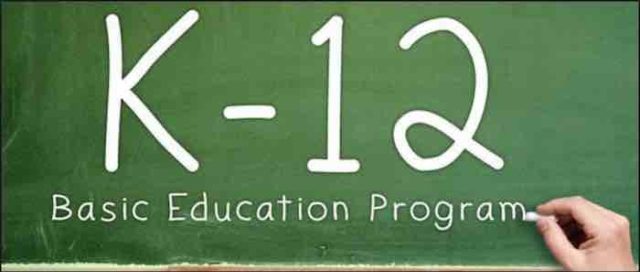 Whenever people gather to discuss problems in education, we hear the same list of issues and solutions.
Whenever people gather to discuss problems in education, we hear the same list of issues and solutions.
We hear about poverty and the need for bigger budgets at all levels, more self-esteem, professional teacher corps, charter schools, vouchers, tutoring and remediation, new literacies, better assessment, year-round schools, pre-K, schools that are more permissive or more strict, the effects of drugs, the impact of violent sports, and the perpetual need for more and more money.
Any talk show or other group will invariably touch on the exact same items. The participants will seem pleased that they are having an in-depth discussion of the options. But are they? My suspicion is that you could mandate all these items, served up on a platter with all the trimmings, and nothing would change.
The main effect of these discussions is that the Education Establishment distracts the public from the real solutions. Everyone feels he is engaged in a serious discussion, but the Education Establishment knows that it has sidetracked the discussion. Eager reformers are divided and distracted.
This process reminds us of child psychology. You show a difficult child three choices, all of which are acceptable to you. You ask the child, which do you want to start with? The child picks one, and that’s an end to the child’s resistance.
Truth is, the real problems in education are not even on the standard list. Public schools are full from basement to roof with dysfunctional gimmicks that never worked. To improve the public schools, the path to success is simple. Get rid of the counterproductive ideas, i.e., the methods that seem to be designed, from conception to implementation, to subvert education.
Here’s a comparable situation. Let’s say there is a high school football team that isn’t doing well. You investigate and find that players are required to put a small pebble in one shoe. Players in a huddle have to speak in a foreign language. All calisthenics must involve lying on the ground. The coach, if he wants to diagram a play, uses pink chalk on green. All plays must include at least one ballet movement. Players must address each other by code names used only in this particular sport.
Now you know why the team is performing poorly. The more interesting mystery becomes, why do so-called experts endlessly recommend self-defeating practices? (Common sense suggests that subversion is the real intent.)
Instead of reformulating these failed approaches year after year, let’s eliminate them. They are all, it turns out, counterproductive gimmicks created by a perverse Education Establishment. Furthermore, these gimmicks have the effect of making education seem difficult and mysterious. How, the public wonders, can we ever reform it? The Education Establishment seems to want people to feel overwhelmed, discouraged, and defeated before they start.
Here’s a simple six-point list of what we must do differently, a list that even self-described “dummies” can instantly act on.
First: Children should learn to read in the first grade, with phonics (the only correct way, according to recent article in the New York Times). Children learn to write cursive. They practice all their skills by writing letters and little essays.
Second: Elementary arithmetic is taught step by step until mastered. Then slightly more demanding arithmetic is taught until mastered. Multiplication tables are memorized. No calculators are allowed until the eighth grade. (All the central elements of New Math, Reform Math, and Common Core Math are eliminated from the school.)
Third: Children learn basic information about geographical and political objects such as the Atlantic Ocean, Spain, the North Pole, the Mississippi River, the state of Georgia, the country of Japan, and so on. Students learn the words they will encounter on any map or trip.
Fourth: Those geopolitical facts segue naturally into the study of history, and a rigorous way with dates that must now and then be memorized so the children have a sense of the structure of history.
Fifth: Basic facts from general science are taught from the first grade on. The emphasis must be on the sort of science that everyone enjoys, such as a caterpillar becoming a butterfly and how an amoeba moves. There should be no political correctness in this science. Information learned in these early grades makes STEM progress possible in later grades. Riddles, puzzles, mazes, and Aesop’s fables are used to engage students.
Sixth: Discuss a movie, a book, or a painting, and let the students play critic. You think it’s good? Why? You think it’s bad? Why? This is real critical thinking, exactly what ordinary humans do throughout their lives.
Public schools often define “critical thinking” as acceptance of politically correct opinions on all subjects. This is neither critical nor thinking! Critical Thinking, a somewhat pompous 500-page textbook, pushes this extraordinary prejudice: “Reading the New York Times carefully from start to finish each day for a year might do even more for your ability to think clearly than reading this book’s advice.” This is best called uncritical thinking.
Finally, here is a simple formula that dummies at all levels can put into practice. The primary goal must be to bring back all the proven good stuff from traditional education, what we call for simplicity’s sake reading, writing, and arithmetic, to be followed by geography, history, science, arts and literature, and so on. That is, the basics, the beautiful, absolutely necessary basics. Immediately, we will start having educated children again.
At the same time, let’s dump all the trash sold to us as “Progressive,” “Modern,” and supposedly better than traditional approaches that worked for thousands of years. All this bad stuff is like viruses in your computer, a big unnecessary nuisance. The good news is that viruses can be plucked out and eliminated one by one.
Truth is, the history of K-12 education for the last hundred years was a so-called reform process going in the wrong direction. A deform process. Progressives destroyed the good ideas and replaced them with dysfunctional gimmicks. Now we reverse the process.
Written by Bruce Deitrick Price and published by The American Thinker ~ November 19, 2018
 FAIR USE NOTICE: This site contains copyrighted material the use of which has not always been specifically authorized by the copyright owner. We are making such material available in our efforts to advance understanding of environmental, political, human rights, economic, democracy, scientific, and social justice issues, etc. We believe this constitutes a ‘fair use’ of any such copyrighted material as provided for in section 107 of the US Copyright Law. In accordance with Title 17 U. S. C. Section 107, the material on this site is distributed without profit to those who have expressed a prior interest in receiving the included information for research and educational purposes. For more information go to: http://www.law.cornell.edu/uscode/17/107.shtml
FAIR USE NOTICE: This site contains copyrighted material the use of which has not always been specifically authorized by the copyright owner. We are making such material available in our efforts to advance understanding of environmental, political, human rights, economic, democracy, scientific, and social justice issues, etc. We believe this constitutes a ‘fair use’ of any such copyrighted material as provided for in section 107 of the US Copyright Law. In accordance with Title 17 U. S. C. Section 107, the material on this site is distributed without profit to those who have expressed a prior interest in receiving the included information for research and educational purposes. For more information go to: http://www.law.cornell.edu/uscode/17/107.shtml

In addition to the recommendations you’ve made, I believe we push our children through the education process too quickly. We force-feed them enormous amounts of knowledge before they have any practical reference for which to understand it. The goal is to make good grades by memorizing material they don’t really understand, as presented on tests, after which they can, and often do, forget much of the material. They eventually emerge from this supersonic gauntlet with a certificate or degree of some sort into the real world where their real education begins because here they are finally immersed in a laboratory where they can actually see how knowledge is applied. So, my recommendation is slow down the knowledge memorization process, and speed up the practical application of the knowledge in the education process. Internships, jobs, and mentor-ships can be helpful in this regard, I think.